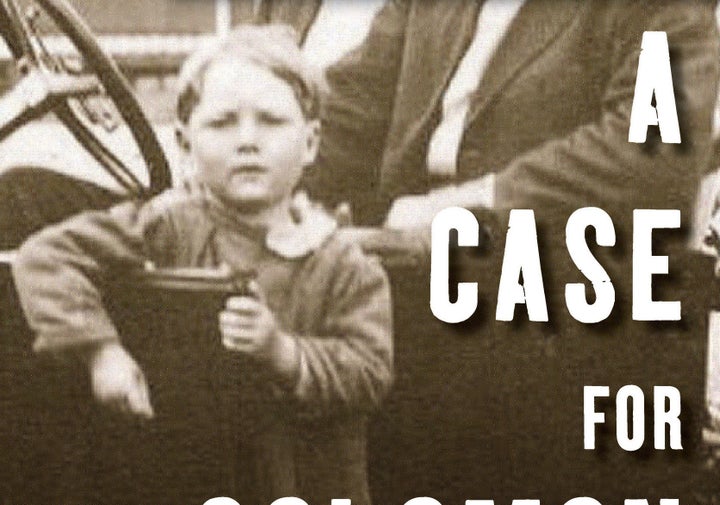
In 2008, I reported "The Ghost of Bobby Dunbar," a radio documentary for This American Life.
The story chronicled one woman's exploration--and explosion--of her family history and her grandfather's identity. The story Margaret Dunbar Cutright grew up with was this: in 1912, her 4 year-old grandfather Bobby Dunbar had been kidnapped by a wandering tinker in Louisiana, then recovered months later.
Mysteriously, another mother had come forward to claim the child as her own son, not Bobby Dunbar. But she eventually was proven wrong, the tinker was convicted of kidnapping, and the boy grew up as part of the Dunbar family. First curious and then obsessed, Margaret spent a decade researching the case, and her discoveries--along with a DNA test--turned the legend on its head, and tore her family apart.
Telling this story as a radio show allowed multiple voices to bring both the past and the present alive--not just Margaret and her family members, but also descendants of the other mother and the alleged kidnapper. The producers at This American Life were committed to honoring the tale's complexity, and gave it a full hour of radio time.
But during my six weeks sifting through Margaret's archival research, I knew that an hour could only graze the surface of what this story truly was. For two full years, the case had made headlines, an epic battle over custody, kidnapping and identity. And after the courts and newspapers were through with it, the mystery had persisted quietly throughout Margaret's grandfather's life. Based on our shared desire to see this full story told, Margaret and I decided to collaborate on a book.
The radio show, which had been enormously popular, was a key part of our pitch. And as we shaped the proposal, and even once we'd sold it and I'd begun writing, we considered an approach like the documentary. We envisioned glimpses of Margaret's investigation, positioned as chapter or section openings, as portals into the past.
But this approach soon felt gimmicky. Neither of us felt like this incredible historical story needed fragments of a memoir grafted into it. And ultimately, it boiled down to a question of stakes: the struggle between two grief-stricken mothers, both claiming the same boy as theirs, the life-or-death consequences for the accused kidnapper, and at the center of it all, the ordeal of the boy himself, flailing his way towards an identity. All of this was much more urgent than the more abstract drama that played out three generations later.
Reading part of an early draft, my TAL producer made a compelling case for breaking up the 1912-1914 storyline, not with Margaret's story, but with glimpses of the characters' experiences, later in life throughout the 20th century, looking back on their own pasts. When I ran this idea by a book editor friend, he scowled and muttered: "That is so radio."
Nevertheless, we gave it a go, on paper. But it soon felt like searching for material to fit the technique. Given that we already had a series of flashbacks embedded into the 1912-1914 sections, and that our patient editor had already likened the manuscript's explosion of characters to a Russian novel, we finally settled, once and for all, on a straightforward chronology.
And yet, there ended up being something to the producer's note. The radio show chronicled the piecing together of the puzzle of the past. By contrast, the book is about looking at that puzzle, assembled. Within the book, the question shifts from "who is this boy?" to "how could this have happened?"
But no matter how much research we did, there were still--and will always be--pieces missing. Contradictory reportage, unknowable psychology, gaps in or losses of the historical record. The experience of mystery, and mystery-solving, then, became part of the book's voice. We proffer raw material for readers to sift through; we point at holes for readers to peer down into.
It has been four years since "The Ghost of Bobby Dunbar" first aired, and TAL is rebroadcasting it this month, coinciding with the book's release and the centennial anniversary of Bobby Dunbar's disappearance. As thrilling as this is, part of me wants the book to be celebrated on its own, apart from the radio show. For this story to have its moment without that one. But aside from this being marketing heresy, I've realized that the stories do, in fact, complement each other. The book probes the historical mystery that the radio show can only hint at. The radio show's voices are a reminder of how much the book's past still means for the present.
Listening to the documentary the other day, it was strange to get pulled back into the time of the telling, to re-live the experience of conflict within and between families. Especially now, when there's been so much reconciliation, and on the eve of a celebratory book tour that will bring family members together, many for the first time ever. The pain of the radio show felt old and happily outgrown. The redemption, which both stories share, felt very much alive.
Tal McThenia is the co-author (with Margaret Dunbar Cutright) of A Case for Solomon: Bobby Dunbar and the Kidnapping that Haunted A Nation (Free Press, $26.99)